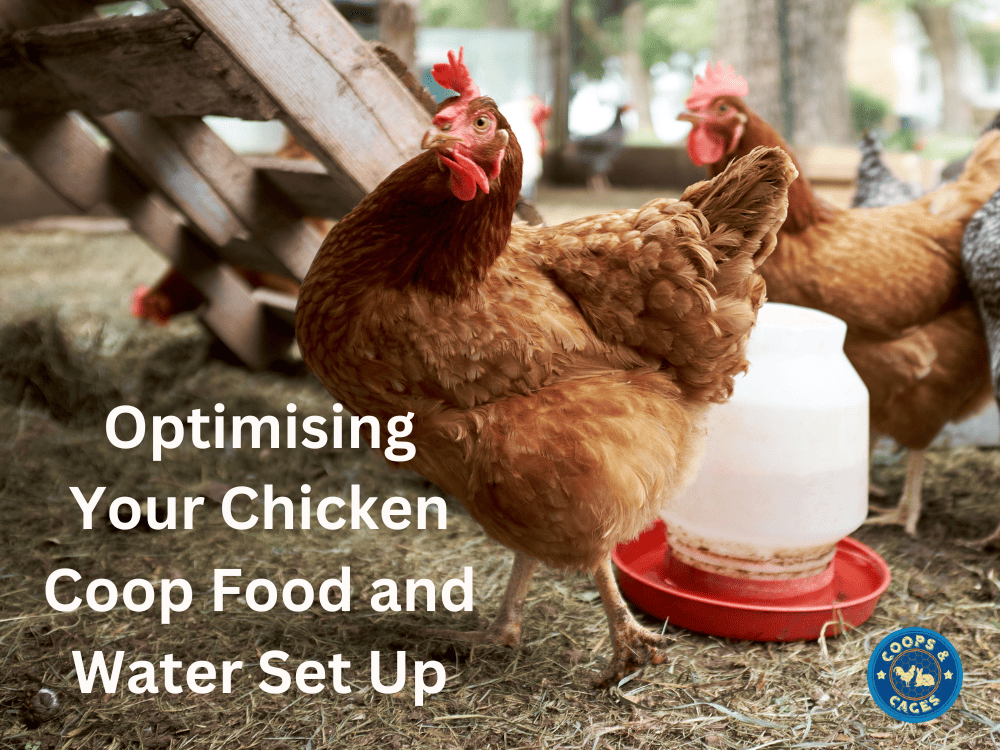Chickens, FAQ's, How To Do Things
Optimising Your Chicken Coop Food and Water Set Up
Choosing the right feeder for your chicken coop is a crucial part of raising chickens. In this blog, we delve into the world of chicken coop food and water set ups, exploring various feeder and drinker options.
We’ll also provide tips for placement, cleanliness and monitoring changes in your flock. Not sure where to begin with your chicken coop food and water set up? Let us help!
- Choosing the Right Feeders for Your Chicken Coop
- Watering Systems for Hydrated and Healthy Chickens
- Placement Strategies for Feeders and Waterers
- Maintaining Cleanliness Around Feeding Areas
- Monitoring and Adjusting Your Setup Over Time
- FAQs in Relation to: Chicken Coop Food and Water Set Up
- Jordan’s Wrap
Choosing the Right Feeders for Your Chicken Coop
If you’re keen to keep your backyard flock happy, choosing the right feeder is important.
Finding That Perfect Match
When pondering over which type of feeder will do wonders in your coop, weigh up these factors:
- Size: Consider how many birds you’ve got – larger flocks will need bigger units or may need more than one feeding station.
- Wastage: Look into treadle chicken feeders as they discourage mess and prevent pests from accessing the chicken food.
- Maintenance: Ease of cleaning should always be front of mind – hygiene is king!
Types of Chicken Feeders
There are lots of different options to choose from. If you’re unsure, you could try multiple and see what works best in your coop space.
- Trough Feeders: Long, open containers that allow multiple chickens to eat at the same time. They are easy to refill but provide easy access for vermin.
- Bell-Shaped Feeders: Essentially an upside-down plastic bucket with a moat at the bottom where the feed collects. They can be hung up to prevent them from being knocked over at feeding time.
- Automatic Chicken Feeders: Chickens step up onto the treadle to open the lid and access food inside. This prevents rodents and native birds from stealing the feed plus keeps out rain.
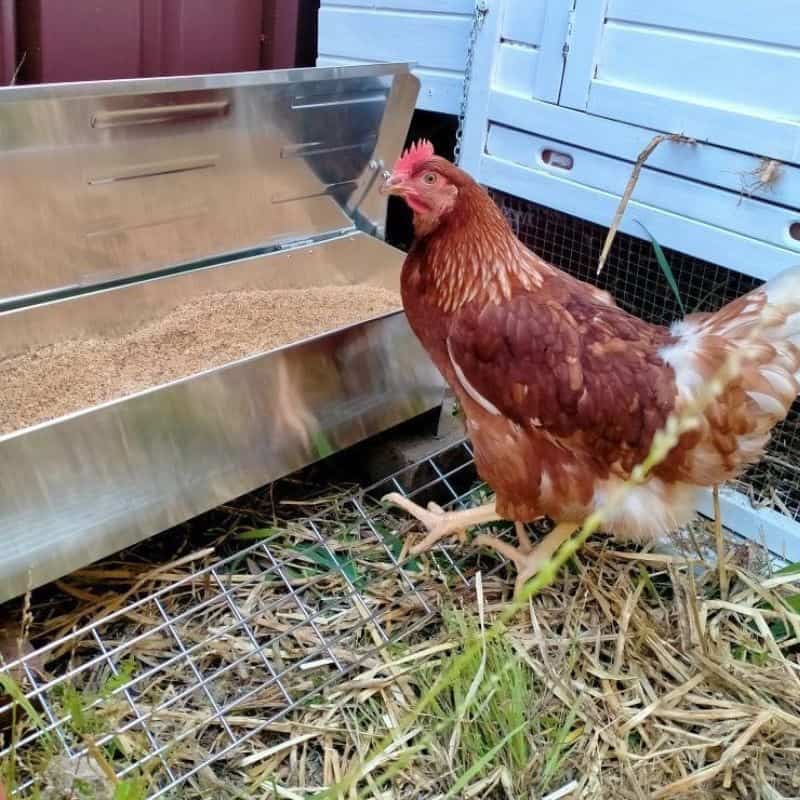
Watering Systems for Hydrated and Healthy Chickens
Chickens need constant access to fresh water, and a reliable watering system is key. Various options are available, each with its own benefits.
Types of Chicken Feeders
- Simple Water Dishes: Open bowls or troughs containing water. They are easily spilled and need daily cleaning to prevent contamination.
- Bell-Shaped Drinkers: Similar to bell-shaped feeders except they hold water.
- Nipple Drinkers: Installed at beak height on buckets or PVC pipes, they release water when pecked by chickens—meaning less waste and fewer refills required from you.
Placement Strategies for Feeders and Waterers
Getting the placement right for feeders and waterers in your chicken coop is a game-changer. It’s not just about convenience; it’s about fostering healthy habits in your chickens while keeping their living space clean.
Elevation
Elevating feeders and waterers off the ground can minimise spillage and contamination. This could be done by either placing the feeder up on some bricks or hanging it from the roof.
But remember, height should be comfortable for all members of the flock so they’re not straining or struggling to reach.
Keeping the Peace
To minimise fighting and ensure the welfare of your hens, it’s a good idea to strategically place several smaller feeding stations throughout the coop floor space.
This discourages competition for resources by allowing more room for movement and reducing congestion at any single spot. Keep feeders away from nesting spaces and roosting bars as hens can be aggressive when interrupted while laying eggs or sleeping.
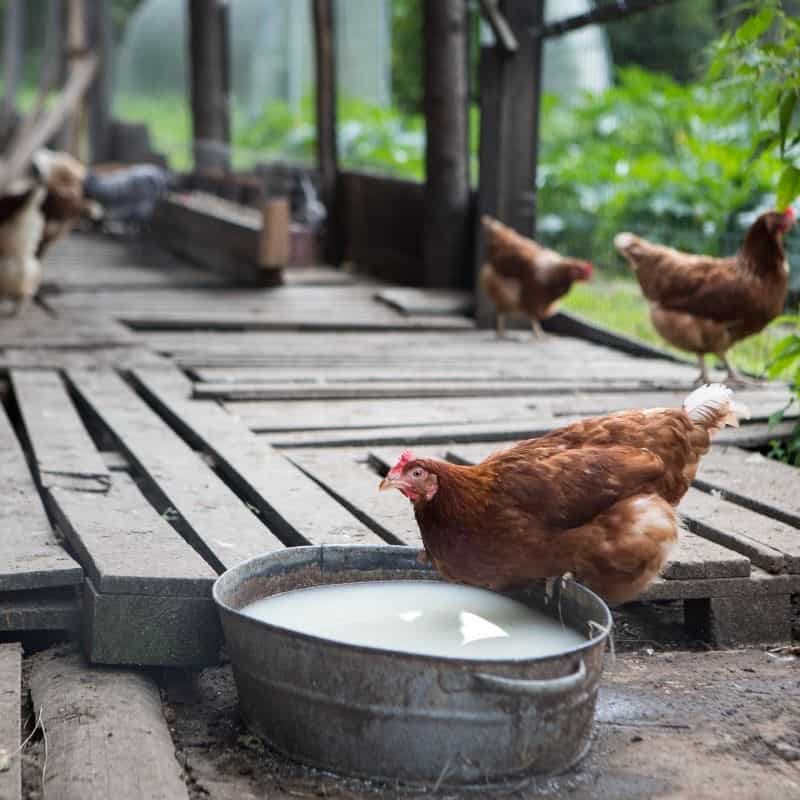
Maintaining Cleanliness Around Feeding Areas
A clean environment not only promotes the health and well-being of your chicken coops but also helps keep pesky vermin at bay.
We’ve all seen what happens when food and water get mixed with bedding – it’s a recipe for mould, bacteria, and an unhappy flock.
Regular Maintenance
Chicken keepers should clean their coop regularly to prevent rodent infestations and health issues. This includes cleaning up spilled feed or spilled water, and replacing soiled bedding (eg. wood shavings).
At least once per week, wash feeders and drinkers thoroughly using warm water and mild soap.
Treadle Feeders
The Treadle Feeder we offer at Coops and Cages is designed to minimise spillage as chooks step on a treadle to access their feed; this cuts down waste remarkably as it keeps out native birds and rodents.
To reduce mess around watering spots, consider positioning them off-ground or opting for nipple systems that deliver water drop by drop without creating puddles underneath.
Preventing Rodents
Rats and mice not only make a mess with their droppings, but they can also spread disease quickly over a very short time. Keep vermin out by putting lids on all feed storage areas and picking up any leftover scraps off the ground.
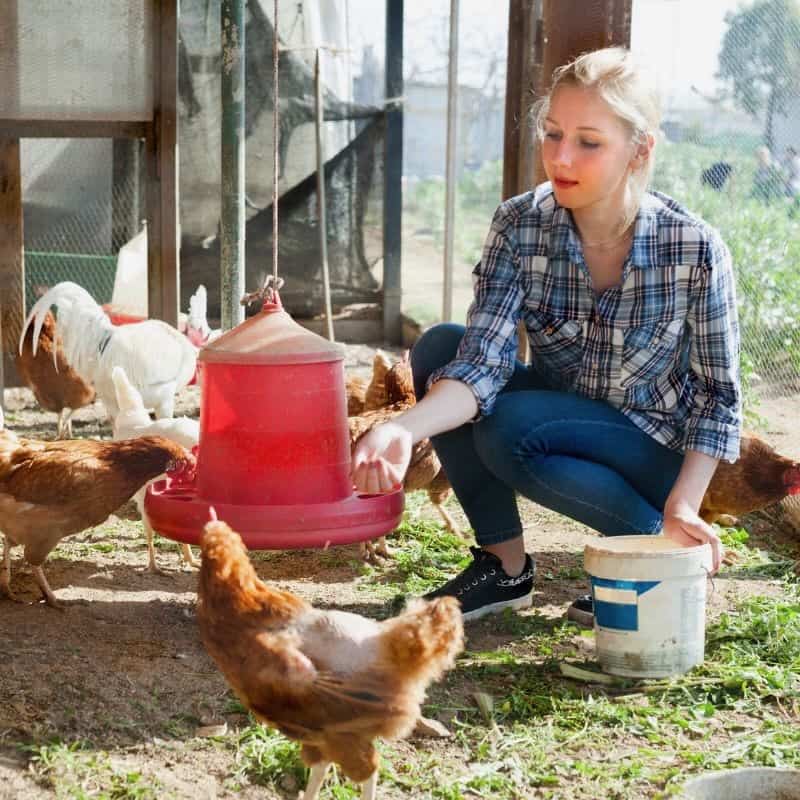
Monitoring and Adjusting Your Setup Over Time
As a flock grows or their behaviour changes, poultry keepers will need to tweak their chicken coop’s food and water setup.
Behavioural Changes
To keep your backyard chickens clucking happily, regular check-ins on their feeding regime are key. Look for signs of bullying that could indicate some chickens aren’t getting enough to eat or drink.
If trouble arises, consider adding more feeders which can prevent dominant hens from hogging all the food. If egg production drops unexpectedly but health seems fine otherwise perhaps stress caused by overcrowding at meal times could be blamed.
Spread out resources to give your girls room to move.
Tackling Seasonal Shifts
Changes in weather also call for adjustments. During hot Aussie summers, extra water stations will help ward off dehydration—make sure they’re shaded to keep water cool.
The scorching sun can also affect how quickly food spoils too so you might need to refill containers with fresh feed more often. Winter brings its own set of challenges as well with wet weather leading to potentially muddy messes around watering areas.
Maintaining dry conditions is essential since dampness breeds bacteria fast. This means ensuring proper drainage around drinkers is critical during rainy seasons while using moisture-resistant feeder designs.
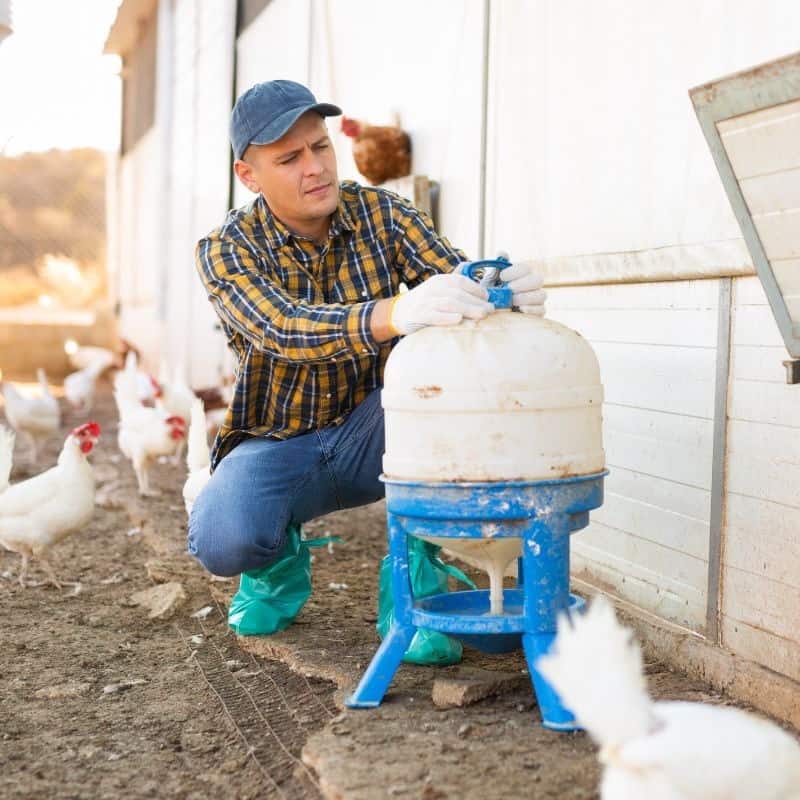
FAQs in Relation to: Chicken Coop Food and Water Set Up
Where Do You Put Food & Water In A Chicken Coop?
Place them where chooks can easily reach without crowding. Keep them away from nesting boxes and roosting places.
How Do You Feed & Water Chickens?
You use feeders for grain, scattering treats on the ground sparingly. Water should be fresh daily in clean containers.
How Much Food & Water Does A Chicken Need Per Day?
A hen typically needs about 200g of feed and 500ml of water each day, depending on her size, age and whether she is laying.
Jordan’s Wrap
In this blog, we’ve explored the different types of chicken coop food and water set ups. With lots of different options on the market, consider what will be easy to clean, have minimal spillage, and keep out rodents.
Place your feeders where your chickens spend most of their time. If there is fighting over resources, have multiple feeders and spread them out.
Keeping chicken feeders clean is an important part of chicken ownership. Monitor how your chickens use their feeders and make adjustments if needed.
Our Coops and Cages Treadle Chicken Feeder is a great way to protect your feed from rain and rodents, saving you money by preventing wastage. We also stock a great range of easy clean coops and chicken runs!



